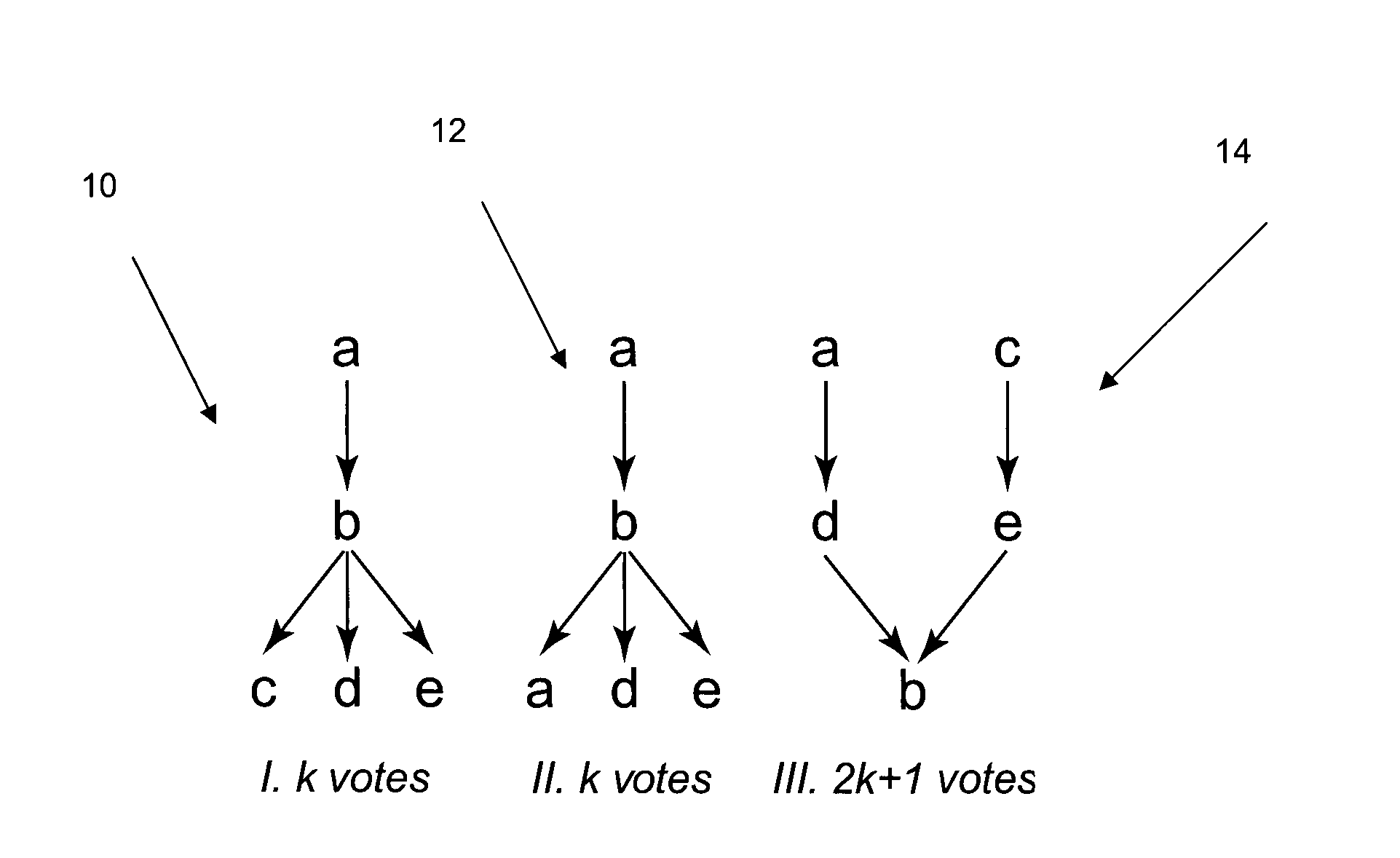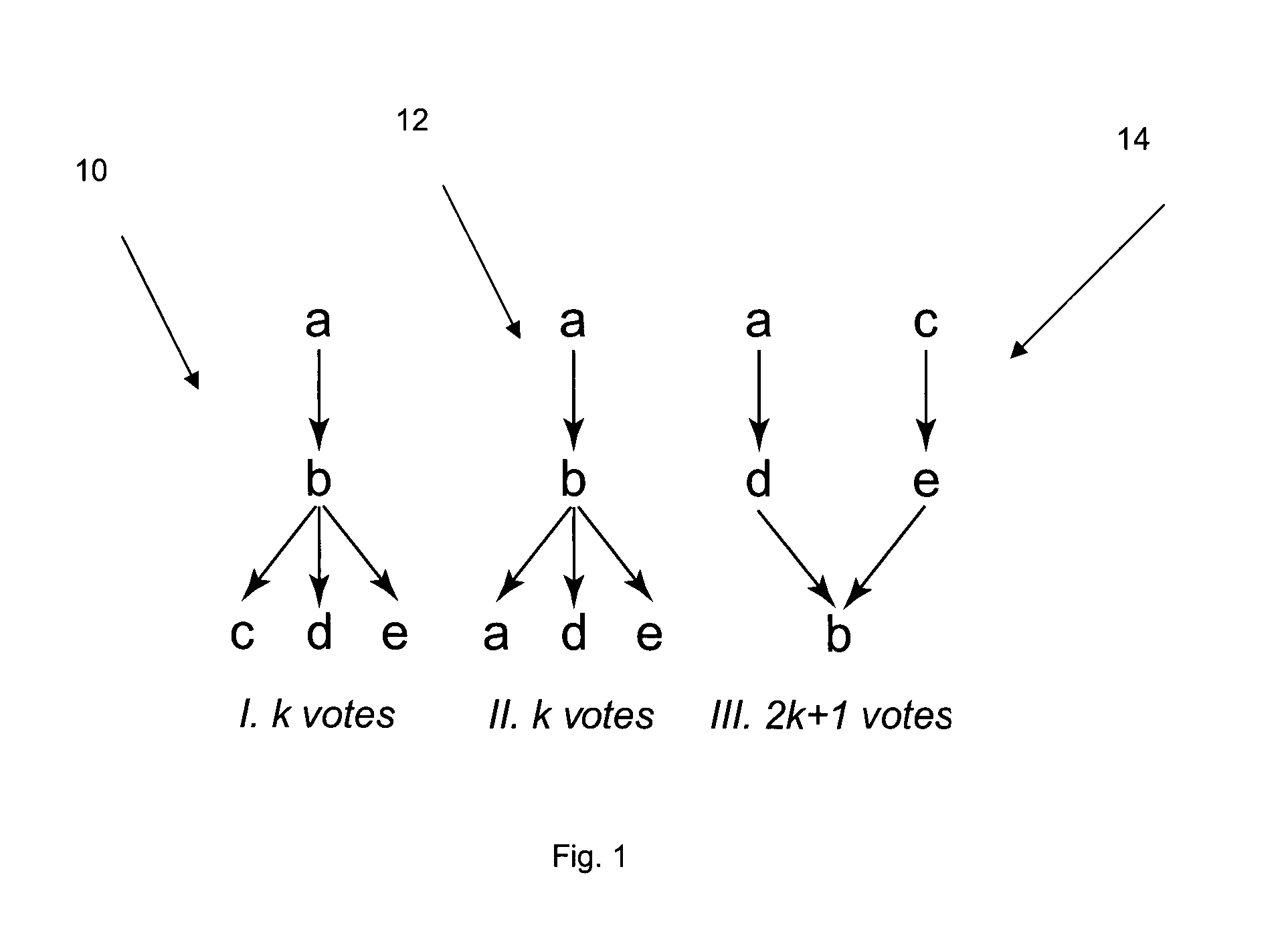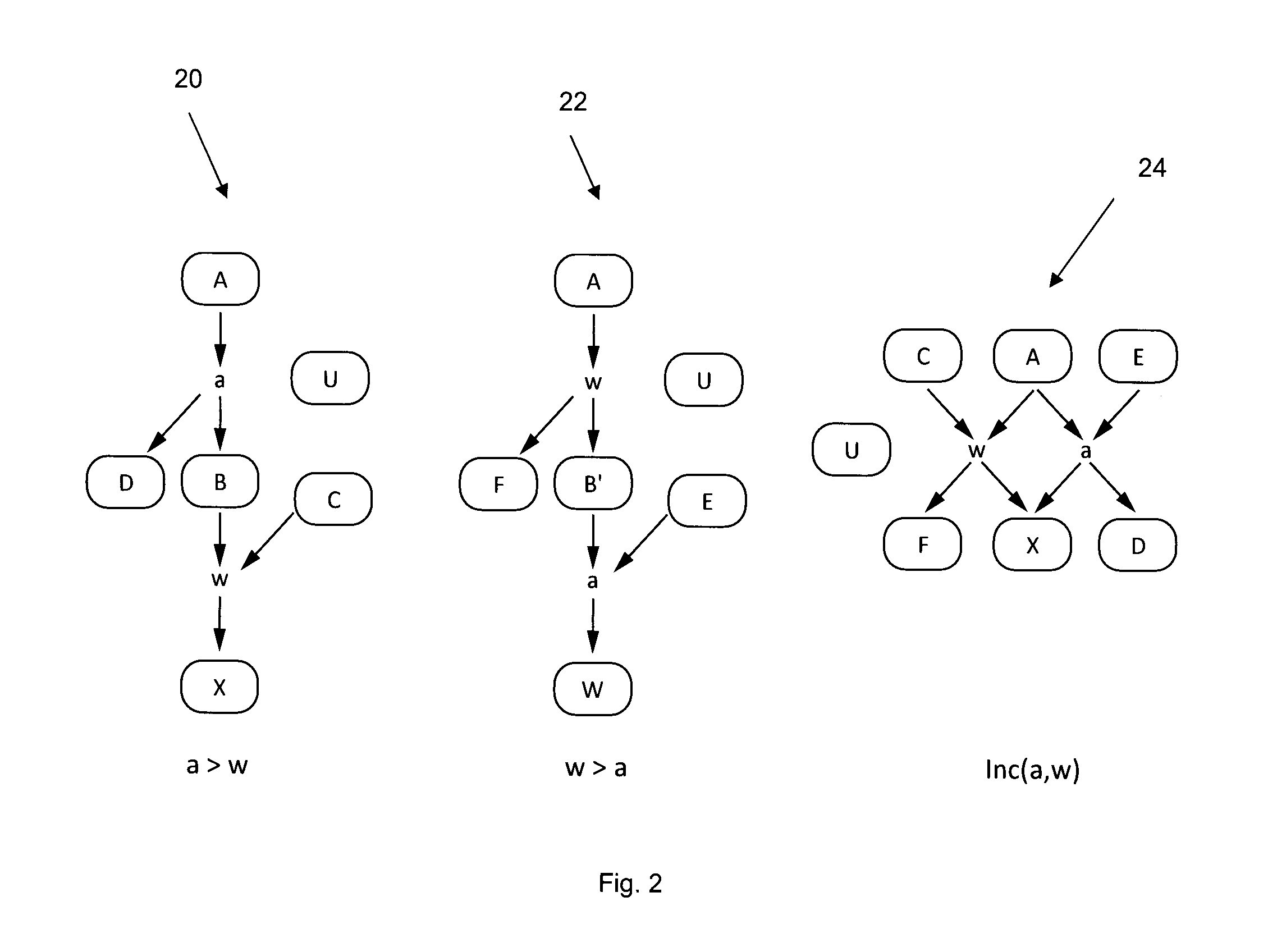Method and system for robust social choices and vote elicitation
a social choice and robust technology, applied in the field of determining vote results, can solve the problems of concomitant ballot complexity (and political factors), the use of voting schemes to support consensus decisions rarely takes this into account, and the inability to account for relative voter preferences for any alternative, etc., to achieve the effect of improving the group satisfaction scor
- Summary
- Abstract
- Description
- Claims
- Application Information
AI Technical Summary
Benefits of technology
Problems solved by technology
Method used
Image
Examples
Embodiment Construction
Definitions
[0050]The term “candidate” may generally be understood in this disclosure to refer to any member of the collection of entities over which the group must decide, including situations beyond political elections. These entities may be applied to, but are not limited to, for example the selection of restaurants or dining options for a group; entertainment options (e.g., books, movies, music, concerts, sporting events, theatrical events) for a group; travel options and destinations for a group; corporate decisions on hiring, purchasing, or strategic direction; group buying options where a group may be comparing a variety of purchasing options for which vendors may have offered volume or group discounts, and many others.
[0051]It should also be understood that other terms may be used to refer to “candidates” such “options”, “alternatives”, or “choices”. All of these terms may be used interchangeably.
[0052]The terms “vote” and “voting” may generally be understood in this document...
PUM
 Login to View More
Login to View More Abstract
Description
Claims
Application Information
 Login to View More
Login to View More - R&D
- Intellectual Property
- Life Sciences
- Materials
- Tech Scout
- Unparalleled Data Quality
- Higher Quality Content
- 60% Fewer Hallucinations
Browse by: Latest US Patents, China's latest patents, Technical Efficacy Thesaurus, Application Domain, Technology Topic, Popular Technical Reports.
© 2025 PatSnap. All rights reserved.Legal|Privacy policy|Modern Slavery Act Transparency Statement|Sitemap|About US| Contact US: help@patsnap.com



